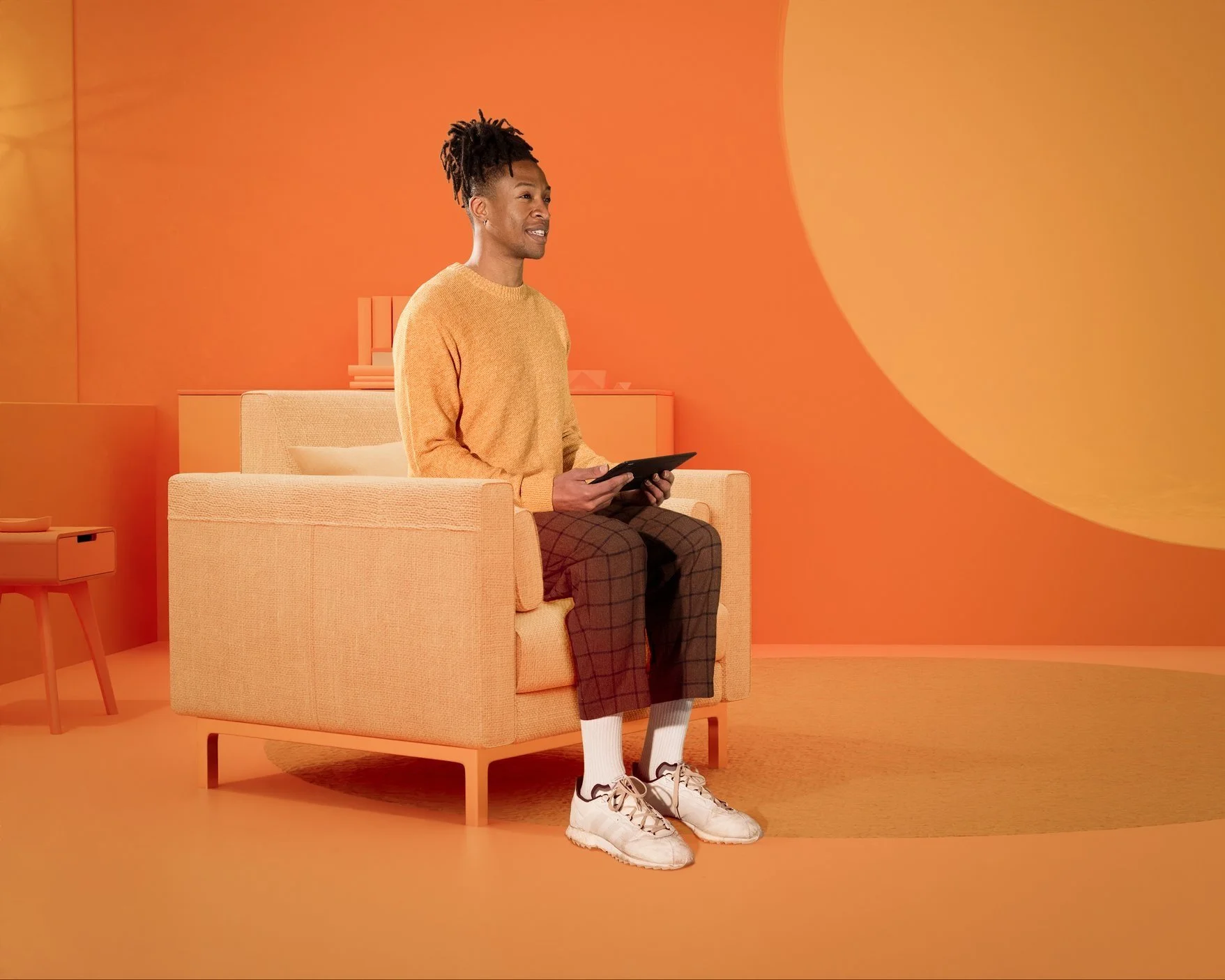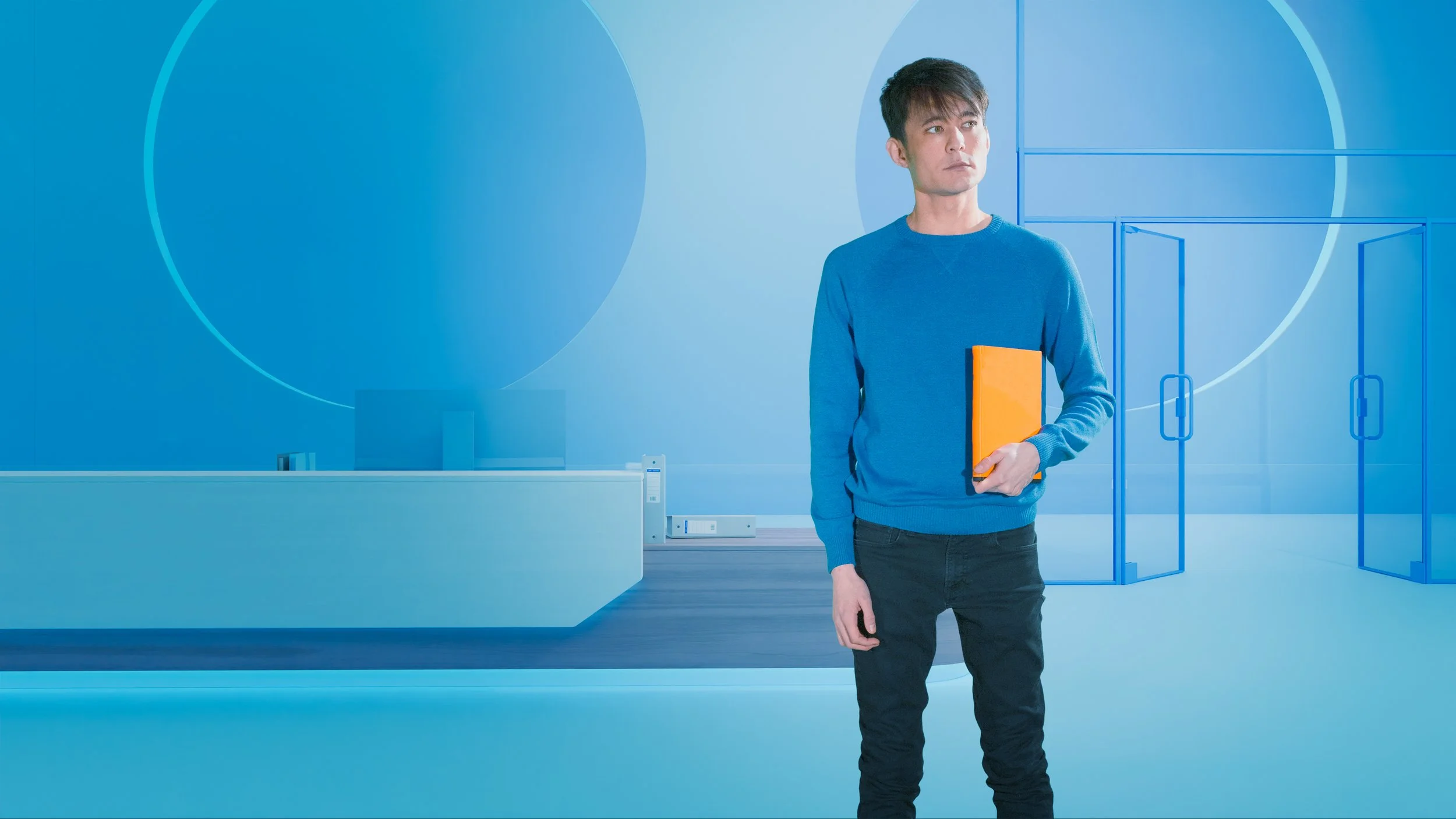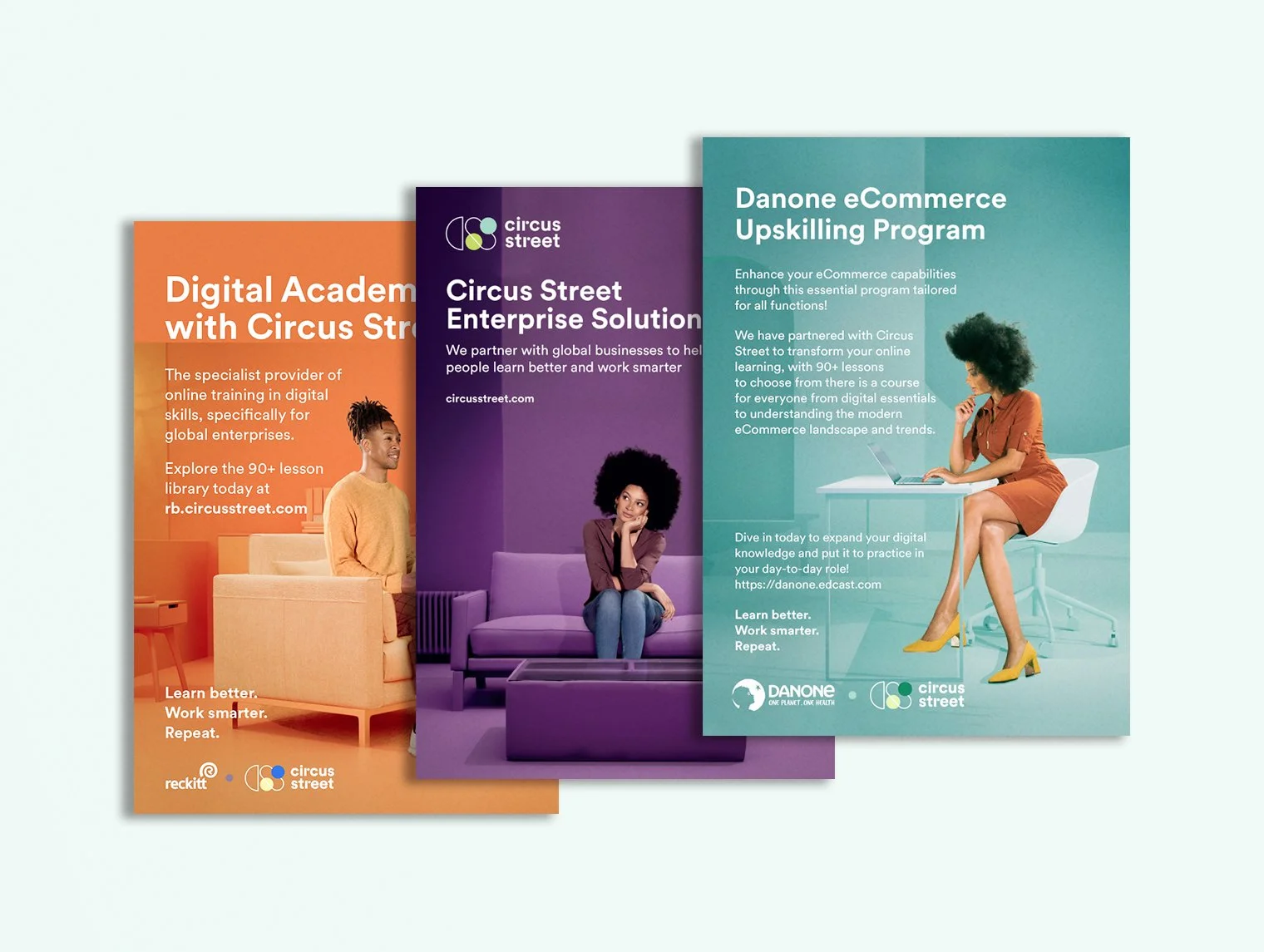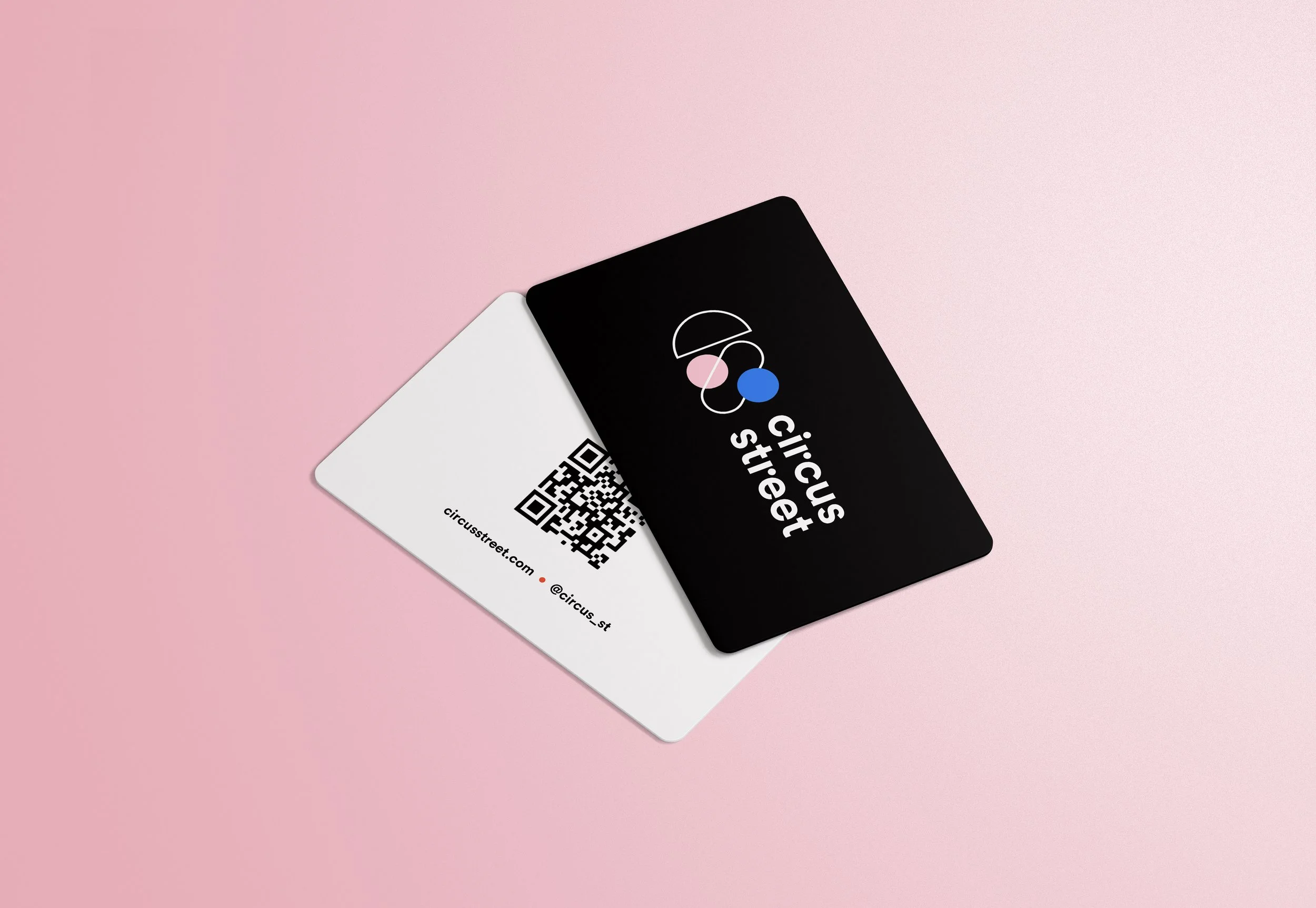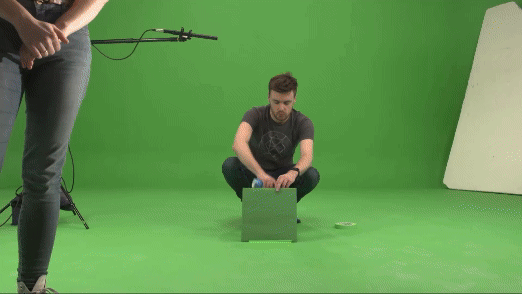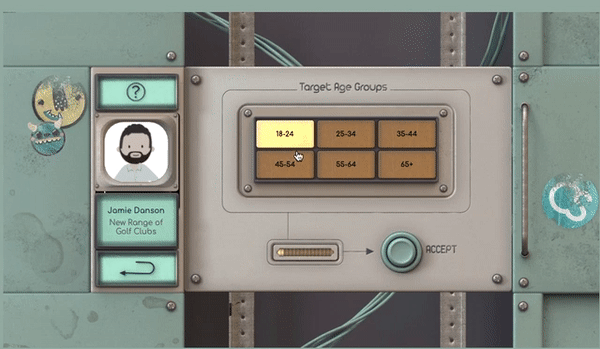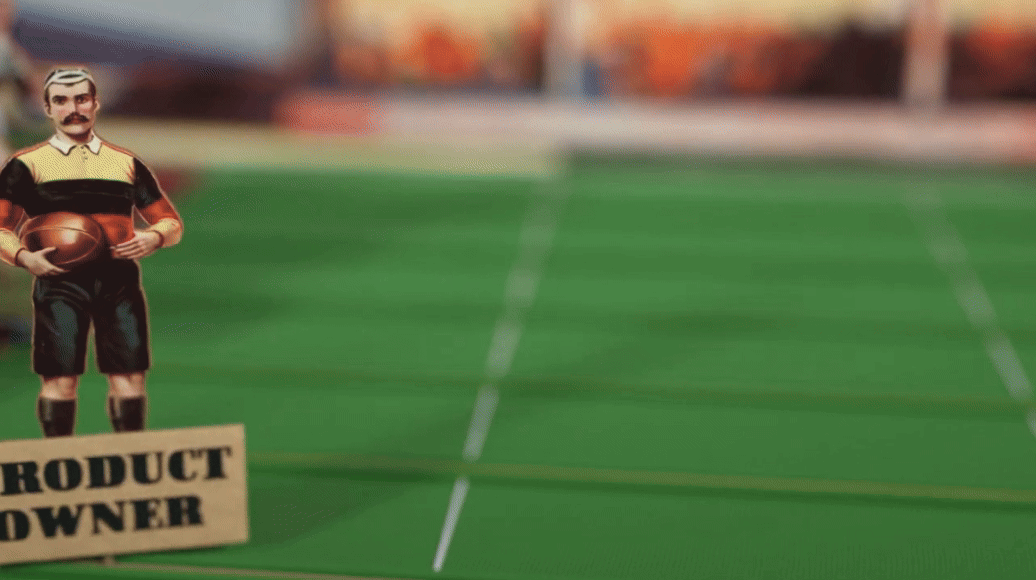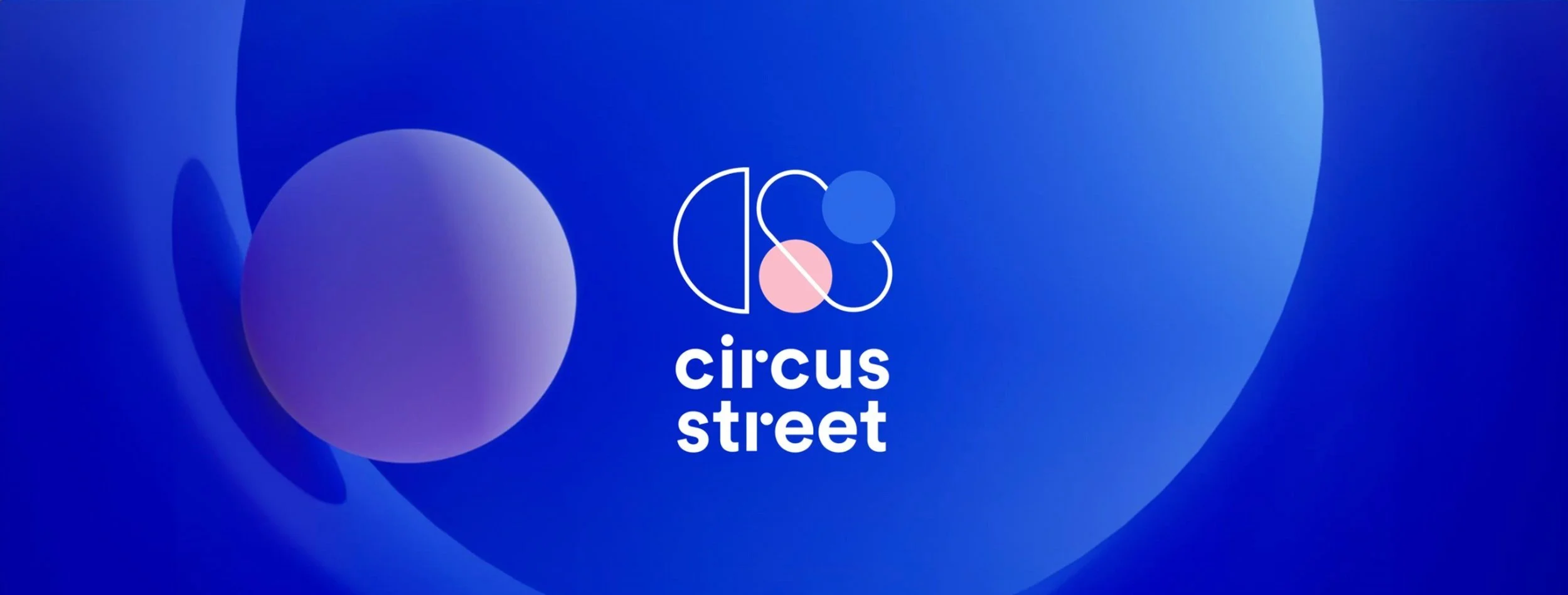
Immersive online learning
As Chief Design Officer at Circus Street, I directed the look and feel of the lessons collaborating with animators and production teams to simplify complex narratives and craft compelling visuals that supported the brand identity.
I was always focused on the bigger picture, ensuring every element aligned seamlessly with the overarching business strategy.
My vision extended across the ecosystem, uniting the website, platform, UX, branding and even office spaces into a cohesive brand experience.
This helped position Circus Street as not just a learning platform but a world-class brand that is innovative, engaging, and trusted.
Making the CS brand stand out
We achieved stand out for the Circus Street brand by ensuring consistency across all touchpoints. By building robust design systems and aligning teams with the brand's visual tone, I maintained a cohesive identity while fostering creative innovation.
To prevent "design creep," I provided frameworks like detailed style guides, component libraries, and regular review sessions. Open communication, cross-team workshops, and collaborative critiques ensured the brand's essence stayed intact, whilst empowering designers to innovate within a unified vision.
Directing engaging production
The brief was to design inviting environments that could be used across multiple subjects. This required creating modular, easily updatable lessons whilst maintaining engagement. I art directed multiple details - from environment design, set dressing, wardrobe and posture - to ensure a consistent style that reinforced the brand’s tone of voice and enhanced the learning experience.
UX Guidance
We used data and feedback from market insights to allow us to create user focused designs that align with our business objectives. This process allowed me to lead design sprints and build prototypes. Priorities were accessibility, maintaining scalable design systems and collaborating with engineers on the product road map. Post-launch, we focused on continuous improvement, ensuring products solve real user problems while staying efficient and consistent.
B2B website
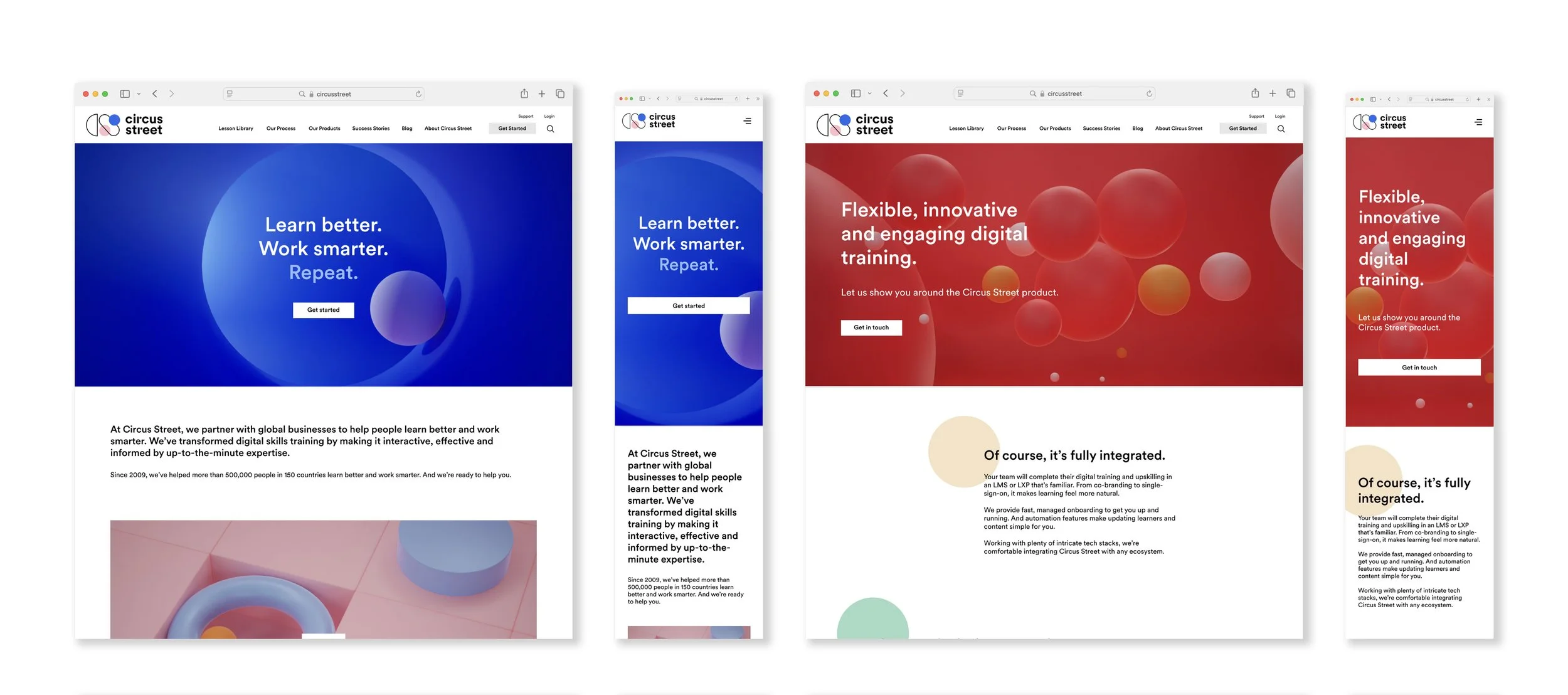
Integrating new
brand & tech
You’ve user-tested, defined your strategy, and set the brand vision—but how do you implement your designs with limited engineering capacity? I identified quick wins that can be achieved within a few sprints by collaborating with product managers. Using the MoSCoW method, we prioritised essential elements and planned phased rollouts that balanced business goals and technical feasibility.
Best practices include building modular design systems for gradual, consistent integration and leveraging reusable components to streamline adoption. A/B testing validates small updates with minimal disruption, whilst collaborative design workshops with engineers ensures alignment and feasibility. This phased approach embeds new brand elements effectively and maintains integrity across the platform.
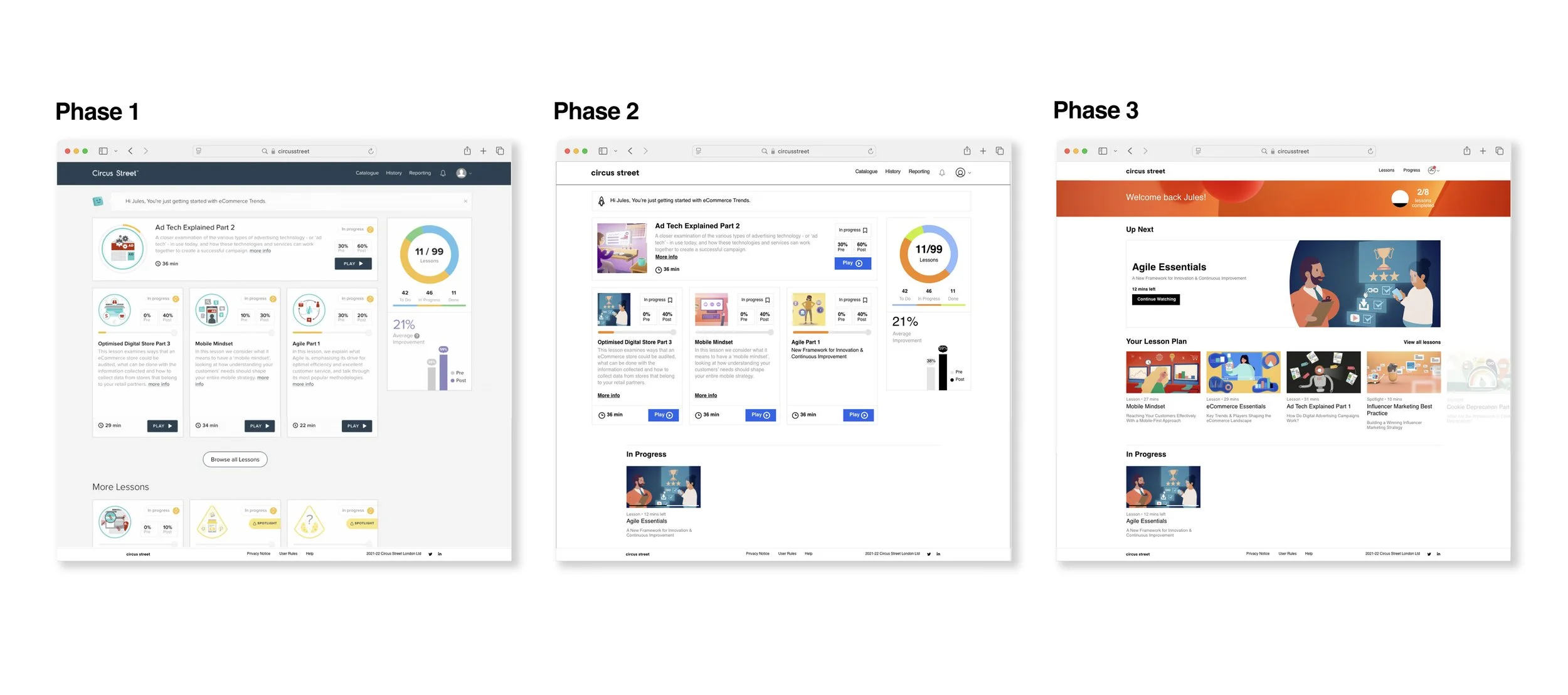
Designing the Physical Space
I believe branding should extend beyond the digital realm into the physical environment, reflecting the organisation's ethos in the spaces where people work and collaborate. Thoughtfully designed offices help employees and clients connect with the brand's culture and also attract talent, retain teams, and inspire creativity.
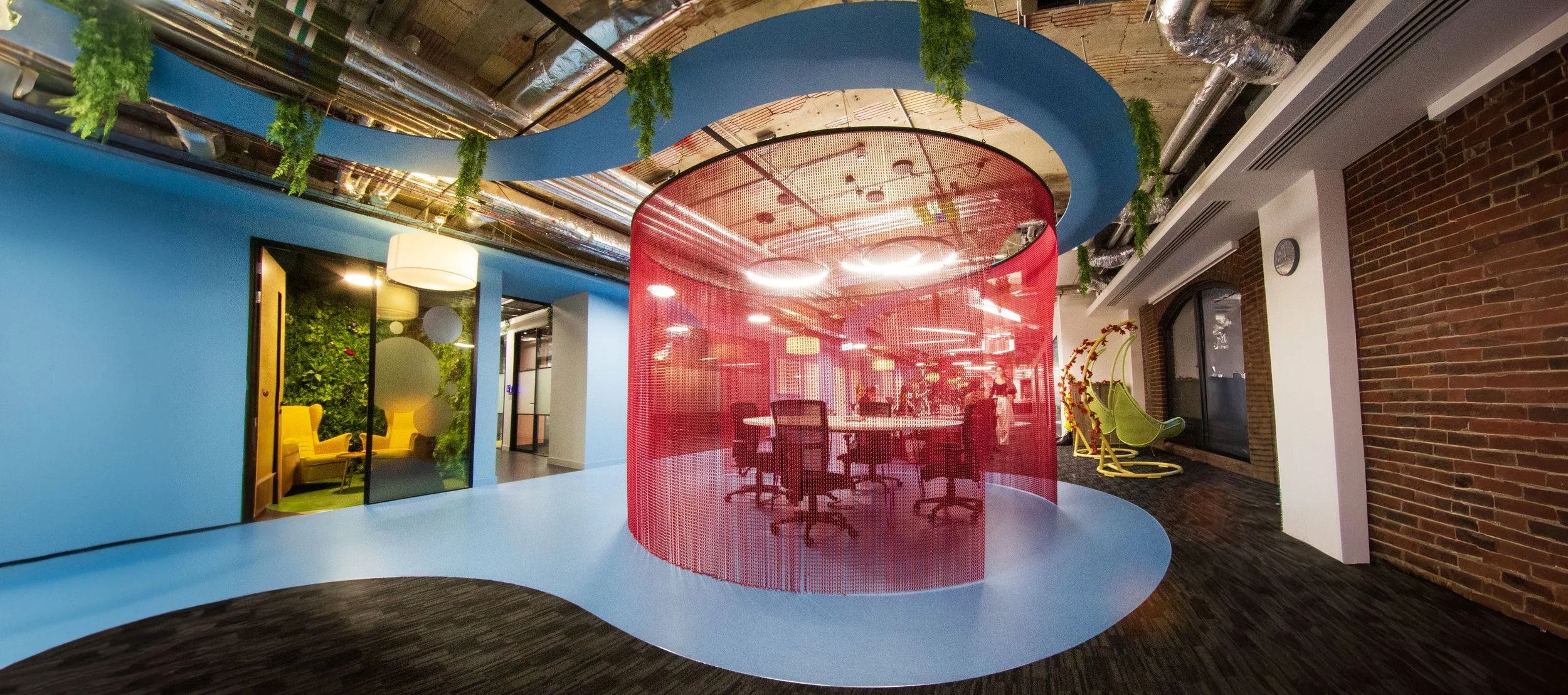
Creating 3D in
Maya / Unreal
I like to know how lighting interacts with real environments to create the right atmosphere for staff. To this end, I use high-end tools like Maya and Unreal Engine to simulate realistic changes in lighting throughout the day, ensuring the designs work from multiple angles.
Using Unreal Engine enables immersive fly through presentations, giving clients a clear sense of scale and proportion. Maya provides precise, photorealistic representations of textures and colours. This approach ensures clients can confidently visualise and connect with the space before construction begins.
